The fitness lifestyle isn’t a cheap one. Supplements, quality protein sources in foods, gym memberships and gym clothing doesn’t come cheap and nor do shoes designed for weightlifting… but are weightlifting shoes really that important?
You don’t have to be a competitor to take weightlifting serious. It’s hands down, one of the most effective ways to build strength, power, and solid muscle mass. To step into a gym ready to lift weights you really don’t need much. All you need is yourself, an optional weightlifting belt, a bottle of water and… a good pair of lifting shoes?
The purpose of this article is to bring to your attention how important weightlifting shoes are and how to go about choosing the best ones. Think they are not worth the extra investment? Shoes alone have been known to instantly add 30 lbs onto an exercise like the squat.
So, what’s wrong with the regular sneakers?
Tennis or running shoes are built to be comfy and allow you to be agile. They’re meant to absorb your bodyweight when you run, and support your feet when you’re making lateral movements.
That softness in the sneakers is what will really kill your lifting technique and efficiency. It’s like trying to lift really heavy weight with your feet on a pillow…..there’s just not enough stability.
When you’re lifting heavy, the goal is to create as much force as possible by transferring it from your feet directly into the floor. If your feet are on soft and squishy surface that’s meant to absorb force, you’re going to lose a bunch of power and furthermore, you’ll be unstable. A great example of this is using leg drive when performing a bench press. You push into the floor from your feet this then transfer’s power that you can use to push the barbell up. Wearing tennis or running shoes means you are missing out on a lot of potential power.
Ankle Flexibility
Most people don’t have an impressive range of motion in their ankles. It’s just how life goes. We walk around all day, and your ankles only have to produce force in a very limited range of motion.
On top of that, ankles usually aren’t at the top of the priority list when it comes to stretching and mobility exercises. Most of us just work with the flexibility that just comes naturally to us.
In most Olympic lifts, we’re required to plantar flex (toe pointed down) explosively, and then squat down real low which requires a ton of dorsiflexion (toe pointed up). If you don’t have a ton of range of motion in your ankles, that’s where the shoes may come in handy.
What one do I choose?!
Weightlifting shoes are characterized by a completely solid sole that is slightly raised in the heel. It’s completely solid so that when you push off of the floor, none of the force is lost, and your feet are completely secure.
Most power lifters use shoes that give them slightly over an inch in the heel. Any shoe with 1 and a quarter inches is pretty standard. You can get higher or lower heels depending upon your leg length.
The platform allows you to sit deeper into a squat while keeping your back and neck straight. Having a raised heel means that you don’t need as much flexibility in your ankle to sit your hips way back. It also promotes driving through your heels on the squat which forces your glutes to do the bulk of the work. And that’s exactly what you want.
Converse Craze
A lot of people also use Converse Chuck Taylor shoes to lift. It’s a completely flat sole which simulates going barefoot.
These shoes have an extremely hard sole, but they’re not completely solid. They’re perfect for deadlifts, because you really don’t need to sit back too far on that lift.
If you have pretty flexible ankles, and haven’t had any previous injuries, you might want to try out this route and see how you like it.
You can always add a slight lift to your heels in these shoes by adding small 2.5 or 5 pound plates under your heels. They’re also $100 cheaper than a lot of official weightlifting shoes. So if you’re ballin’ on a budget, this is the way to go.
If you’re looking to reach your potential, make sure you have a pair of lifting shoes that’s right for you. It might make the difference for a new PR. Some of the most popular branded choices are the Nike Romaleos 2 and the Adidas Adipowers, try giving them a search and see what best fits in with your price range and goals.

